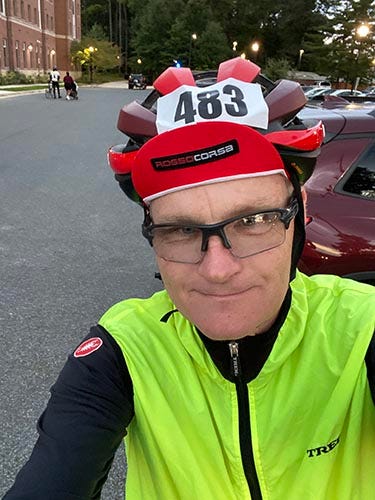The Seagull Century event has a reputation for punishing riders with wind.
That reputation remains intact. I rode into it for 40 miles straight last Saturday. The wind treated me like Rocky treated Apollo.
I was one of 5,000 riders doing the Seagull. It started well and I made good time, rolling along at nearly 20 mph for the first few hours. It was chilly, which I wanted, but not cold, which I didn’t. My socks weren’t warm enough, which was my only mistake when it came to my kit (clothing, for the cycling uninitiated. For some reason, we think it’s cool to have our own vocabulary. That’s because we know that in reality we’re the most uncool people on the planet.)
At about 40 miles, the rain started. That was unexpected, according to the forecast. The rain got harder for awhile, soaking my already cold feet and making them numb. The rest of me was OK, for the most part. Good cycling clothing dries quickly.
It rained for less than an hour, then gray skies dominated for the next part.
Once we hit Assateague Island (home of the famous wild horses), the course turned west and headed back to Salisbury University. That’s when the wind turned nasty.
It’s a fickle thing, wind. It’s your best friend one minute, pushing you forward and whispering to you about imminent personal best times. Then you turn around, and it changes teams, becoming your mortal enemy. It mocks every pedal stroke. It turns your wheels into concrete. It laughs at you, and you wonder how you again got sucked into believing it was your pal, ready to help.
I fought this traitor wind hard. I trained for the event (more about my regimen in an upcoming post), and even though it started wearing me down, I muddled through. I had trouble finding a group to latch onto and shelter me from the wind until the last 10 miles or so. Miles 60-90 were brutal. Every time a huge gust washed over me, I ducked my head, trying to give the wind a smaller target. I did a lot of ducking the last few hours.
When I was getting super fatigued at around mile 90, a small group came by and I grabbed the last rider’s wheel (i.e., I got close to him and tucked in behind his bike, drafting just like a race car does) and held on. It was exactly what I needed then, and I even got a little stronger toward the end, out of the wind’s iron grip.
My goals for the Seagull were to finish in six hours and average 17 mph. I exceeded both of those, averaging about 17.7 mph for the event. I didn’t expect that at all, especially with the wind in my face for so much of it. I said in the previous blog that I didn’t expect to hit either of those marks, and instead I bettered both of them.
Wow.
I’ve done numerous centuries this year, and I guess that, along with my training, did the trick. I was tired at the end, but not exhausted to the point of collapse. That’s another good thing.
My wife Kathy was there at the finish line, cheering me on. The Seagull finishes by going under a tunnel and out the other side, into the university. It’s a great way to end a ride, and having Kathy there made it even more special.
I’ve done the Seagull two years in a row now. Whether I do it next year remains to be seen—there’s a tough gravel race in Pennsylvania on the same day (or at least there was this year), and I may want to do that next year, as I’m getting more into gravel riding these days. But whichever I do, I’ll have many great memories of this year’s event.
The wind, however, will not be one of them.
(Did you ride the Seagull Century this year? I’d love to read your comments below on your experience.)






